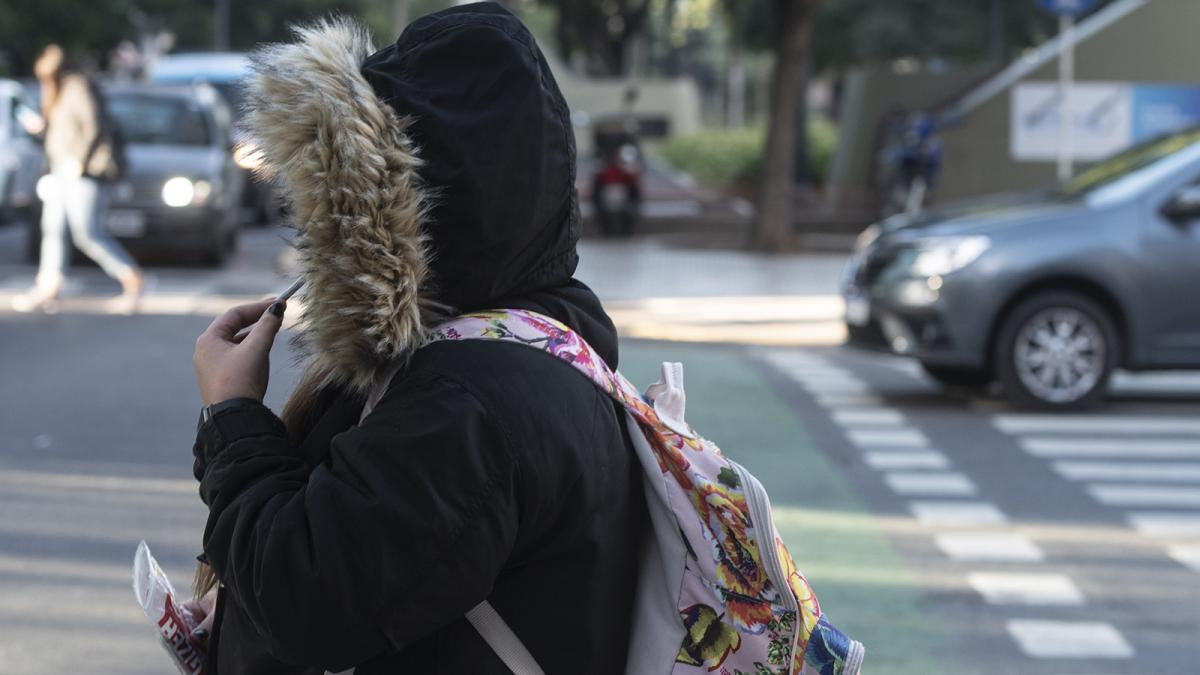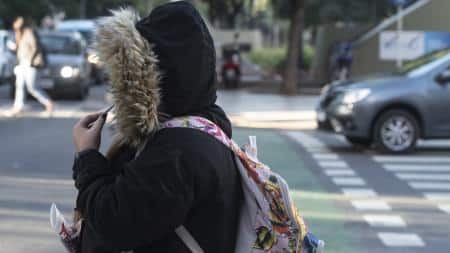 The Mendoza town of Malargüe led the cold ranking with 4.6 degrees below zero / Photo: Victoria Egurza
The Mendoza town of Malargüe led the cold ranking with 4.6 degrees below zero / Photo: Victoria Egurza
The low temperatures that since Sunday affect a large part of the country were felt strongly this morning in the central region of the national territory in towns of Mendoza, Córdoba and San Luis, with thermal marks that were around 9 degrees below zeroaccording to the National Meteorological Service (SMN) which issued “cold” alerts in sixteen provinces.
The entry of a cold air mass last Friday in the central region of Argentina impacted the more than 25 degrees that were registered the day before, a situation that deepened last Saturday with a new entry of air of polar originthis time.
In this framework, since Sunday the provinces of the central region of the country registered temperatures close to or below zero degrees, which deepened in the early hours of today with thermal marks that they reached -9 in Malargüe, Mendoza, and -8.7 in Villa Reynolds, San Luis.
In addition, in the Mendoza town of Uspallata -7.1 degrees were recorded; in Chapelco (Neuquén) -6.5; in Jáchal (San Juan) -6.5; in Perito Moreno (Santa Cruz) -6; in Cordoba -5.7; in Bariloche, General Pico and Victorica (La Pampa) -5.5; in La Quiaca -5.2; in the San Juan capital -5; in Maquinchao and El Bolsón -4.6 and in Santa Rosa -4.5, according to what the SMN published on its official Twitter account on Monday.
“Throughout the weekend several cold air inlets in the center of the country caused marked drops in temperature and left much colder conditions throughout the region,” he said in dialogue with Télam. Cindy Fernández, meteorologist for the agency.
The specialist remarked that in the early hours of this Monday temperatures below zero degrees were warned in different locations in the Buenos Aires Metropolitan Area (AMBA) such as in El Palomar, where -3 degrees Celsius were recorded.
Likewise, at the Ezeiza weather station the thermometer marked -1.2 degrees, in San Fernando -0.4 and in Merlo, Morón, La Plata and the City of Buenos Aires the minimum temperatures were between 0 and 2 degrees.
“Also moderate to severe frosts were recorded in several towns in the central region of the country, which could have an impact on crops,” the specialist explained, noting that these conditions will continue “at least until Wednesday.”
“Tomorrow a new cold day is expected, with temperatures similar to today’s and with maximums that, in the central zone of the country, will be between 10 and 12 degrees,” Fernández said.
It is expected that from Wednesday “wind from the north sector will begin to predominate and, very slowly, temperatures will begin to rise with minimums that will be between 6 and 9 degrees, while the maximum can reach 15,” added the meteorologist.
Fernández also assured that this week the sessions will take place “with clear skies” throughout the central region of the country, “at times some cloudiness may appear, but in general terms they will be sunny days.”
🥶 This week profiles with a lot of #cold and winter temperatures in much of the country. In sectors of the coast, NOA and northeastern Patagonia, values of up to 4 °C and 5 °C below normal can be expected.
👉🏻 Check the forecast and find out at https://t.co/HR4LGtOd3P pic.twitter.com/xdUdzAAKTg
— SMN Argentina (@SMN_Argentina) June 12, 2023
The SMN Early Warning System (SAT) issued yellow alerts “due to cold” on Monday for 16 provinces and for the Malvinas Islands, which establishes that the temperatures registered in these areas may have a “slight to moderate effect on health ” and be “dangerous, especially for risk groups such as boys and girls and people over 65 years of agewith chronic diseases.
The districts that are under yellow alert for extreme cold temperatures are: Buenos Aires city, Buenos Aires province, Entre Ríos, Corrientes, Misiones, Santa Fe, Santiago del Estero, Jujuy, Salta, Catamarca, Tucumán, La Rioja, Córdoba , San Luis, San Juan, Mendoza, Neuquén, La Pampa and the Malvinas Islands.
Meanwhile, a large part of the west of the provinces of Jujuy, Salta, Catamarca and Tucumán were under a yellow level alert due to winds with gusts that can reach 100 kilometers per hour.
The SMN warned that the mountainous areas of these provinces will be affected by northwesterly winds with speeds between 60 and 70 kilometers per hour (km/h) and gusts that can reach 100 km/h.
In the rest of the areas, northwesterly winds with speeds between 40 and 60 km/h and gusts that can exceed 75 km/h are expected, according to the meteorological agency.
In Jujuy, the alert included the Puna de Susques, while in Salta it affected the Puna de Cachi, La Poma, Los Andes and Molinos. Meanwhile, in Catamarca it extended over the Puna de Tinogasta, Antofagasta de la Sierra, Belén, Cafayate, San Carlos and Santa María. Lastly, the alert also included a portion of northwestern Tucumán, in the highlands of Tafí del Valle.
Among the recommendations for the inhabitants of these areas, the SMN asked to avoid outdoor activities and to secure items that can be blown away.
The yellow level implies “possible meteorological phenomena with damage capacity and risk of momentary interruption of daily activities”, according to the national body.


